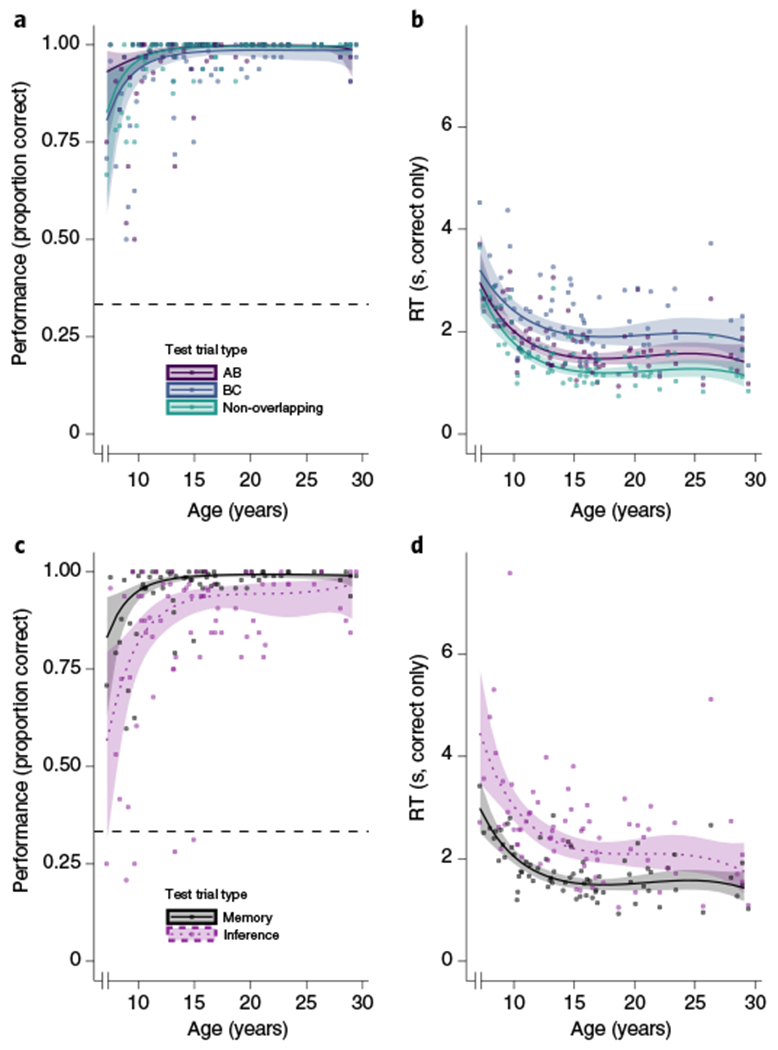Fig. 2 |. Task performance.

a,b, Performance (accuracy) (a) and RT for correct trials (b) in the pair memory test (types AB, BC and non-overlapping) as functions of age. There were significant main effects of both age (χ2(3) = 34.11, P < 0.001) and trial type (χ2(2) = 7.09, P = 0.03) on accuracy, but no significant interaction (χ2(6) = 10.13, P = 0.12; 7,944 trials). For RTs, there was a significant effect of age (χ2(3) = 55.68, P < 0.001) and an age-by-condition interaction (χ2(6) = 13.80, P = 0.03); there was no significant main effect of condition (χ2(2) = 2.00, P = 0.37; 7,535 trials). c, Memory and inference performance (accuracy) as a function of age. There were significant main effects of test type (memory or inference; χ2(1) = 34.28, P < 0.001) and age (χ2(3) = 31.35, P < 0.001) as well as an age-by-test-type interaction (χ2(3) = 10.30, P = 0.02; 10,592 trials). d, RT as a function of age. There were significant main effects of age and trial type, such that RT decreased over development (χ2(3) = 54.69, P < 0.001) and memory was faster than inference (χ2(1) = 16.65, P < 0.001; there was no significant interaction, P = 0.27; 9,749 trials). For all panels, we used (generalized) linear mixed effects models to assess whether age, test trial type or their interaction was associated with accuracy and RT on individual trials. In all charts, the lines and bands depict model predictions and 95% CIs derived from the better-fitting models including age; the dots depict individual participant means (for accuracy) and medians (for RT) by condition. For all panels, N = 86 participants.
